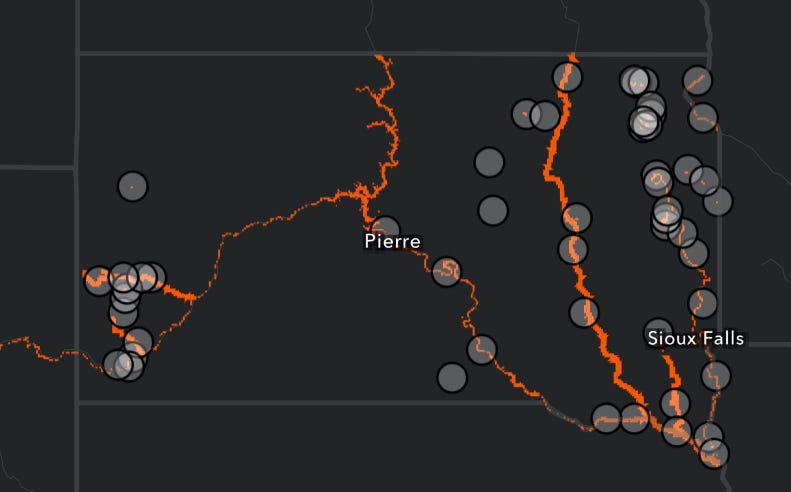Improving ice fishing conditions met with another zebra mussel confirmation
Video: See how invasive species has spread across South Dakota since 2014
As ice fishing season kicks off with the year’s first extended cold snap, the South Dakota Game, Fish and Parks (GFP) Department has confirmed zebra mussels in yet another East River lake.
And anglers heading to the ice are being urged to take precautions to prevent the further spread of the invasive species.
According to GFP, aquatic and park staff detected zebra mussels at Prestrude’s boat ramp on the east side of Lake Poinsett during routine inspections conducted as part of winter dock removals. The finding, combined with a previous suspect mussel in the area, led GFP to designate the Lake Poinsett/Dry Lake Complex as positive for zebra mussels.
Aquatic Invasive Species (AIS) Coordinator Tanner Davis said not only is it required that equipment be cleaned, drained and dried after being pulled from any water, he also noted it is illegal to dump live bait into ice holes or transfer bait between lakes, rivers or streams.
The Lake Poinsett discovery caps a decade of zebra mussels spread in South Dakota. First found in South Dakota’s Lewis and Clark Lake in 2014, the invasive species has since been confirmed to have spread to nearly two dozen South Dakota water bodies, including:
Lakes: Lake Mitchell, Lake Yankton, Lake Sharpe, Lake Francis Case, Lake Cochrane, Lake Kampeska, Pickerel Lake, Dahme Quarry, Enemy Swim Lake, Blue Dog Lake, Clear Lake, South Rush Lake, Pactola Reservoir, Roy Lake, Big Stone Lake, Lake Oahe
Rivers: Missouri River below Gavins Point Dam, Big Sioux River, James River
Wildlife Areas: Sand Lake National Wildlife Refuge
Check out how the spread has progressed in the video below.













